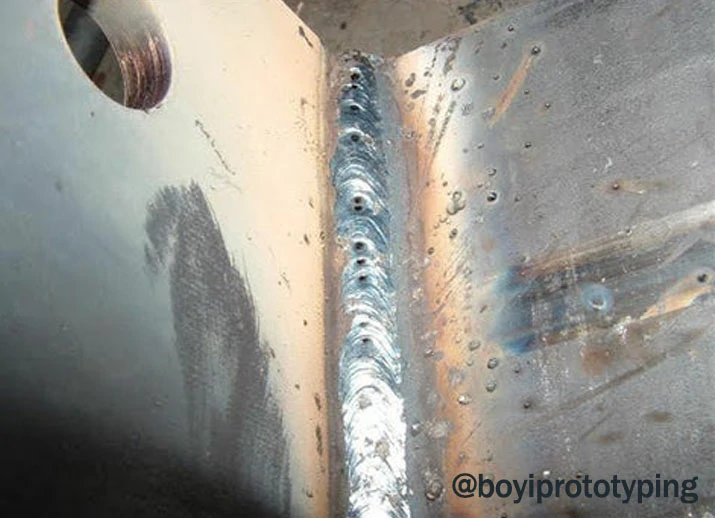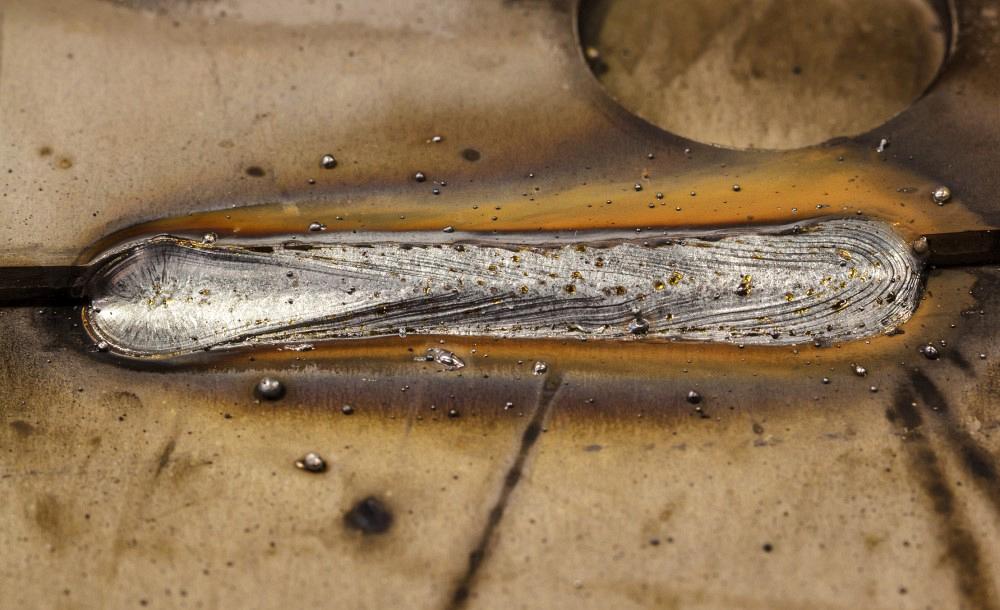What is Porosity in Welding: Usual Resources and Efficient Treatments
What is Porosity in Welding: Usual Resources and Efficient Treatments
Blog Article
Porosity in Welding: Identifying Common Issues and Implementing Best Practices for Prevention
Porosity in welding is a prevalent problem that typically goes undetected up until it creates substantial issues with the stability of welds. This typical defect can jeopardize the strength and resilience of welded frameworks, presenting safety risks and bring about pricey rework. By recognizing the root creates of porosity and applying reliable avoidance methods, welders can significantly enhance the high quality and reliability of their welds. In this discussion, we will check out the crucial aspects adding to porosity development, analyze its destructive impacts on weld efficiency, and review the most effective methods that can be embraced to reduce porosity incident in welding procedures.
Common Causes of Porosity

An additional regular offender behind porosity is the existence of pollutants externally of the base steel, such as oil, oil, or rust. When these pollutants are not successfully eliminated prior to welding, they can vaporize and become caught in the weld, creating flaws. Additionally, using dirty or damp filler products can introduce pollutants right into the weld, adding to porosity problems. To reduce these common reasons for porosity, detailed cleaning of base steels, correct protecting gas selection, and adherence to ideal welding criteria are important practices in accomplishing premium, porosity-free welds.
Effect of Porosity on Weld Quality

The existence of porosity in welding can substantially jeopardize the architectural honesty and mechanical properties of bonded joints. Porosity creates gaps within the weld metal, compromising its total toughness and load-bearing capability.
Among the primary effects of porosity is a reduction in the weld's ductility and strength. Welds with high porosity levels often tend to display lower impact strength and minimized capability to deform plastically prior to fracturing. This can be especially concerning in applications where the welded parts undergo vibrant or cyclic loading problems. Porosity can impede the weld's capability to effectively transfer hop over to here pressures, leading to premature weld failure and potential security hazards in critical frameworks. What why not look here is Porosity.
Ideal Practices for Porosity Prevention
To enhance the structural stability and top quality of bonded joints, what specific procedures can be applied to minimize the incident of porosity throughout the welding procedure? Making use of the correct welding method for the details material being bonded, such as readjusting the welding angle and gun setting, can better avoid porosity. Normal inspection of welds and instant remediation of any issues determined throughout the welding procedure are crucial methods to stop porosity and generate premium welds.
Significance of Correct Welding Strategies
Carrying out proper welding techniques is extremely important in ensuring the structural stability and quality of bonded joints, building on the foundation of reliable porosity prevention steps. Welding techniques directly affect the general strength and resilience of the welded structure. One vital element of appropriate welding methods is maintaining the right heat input. Too much heat can lead to raised porosity because of the entrapment of gases in the weld pool. Conversely, not enough warmth might lead to insufficient combination, developing prospective powerlessness in the joint. Additionally, making use webpage of the suitable welding specifications, such as voltage, existing, and travel rate, is essential for attaining sound welds with very little porosity.
Additionally, the choice of welding procedure, whether it be MIG, TIG, or stick welding, ought to align with the particular requirements of the task to make sure ideal results. Correct cleaning and preparation of the base steel, as well as selecting the right filler material, are also necessary elements of proficient welding methods. By sticking to these finest practices, welders can lessen the risk of porosity development and create high-quality, structurally sound welds.

Evaluating and Top Quality Control Measures
Quality control measures play an important role in verifying the integrity and reliability of welded joints. Testing treatments are vital to identify and stop porosity in welding, ensuring the strength and sturdiness of the end product. Non-destructive testing techniques such as ultrasonic screening, radiographic screening, and aesthetic assessment are commonly employed to determine possible issues like porosity. These strategies enable for the evaluation of weld top quality without endangering the honesty of the joint. What is Porosity.
Conducting pre-weld and post-weld evaluations is additionally vital in maintaining top quality control standards. Pre-weld inspections entail validating the products, equipment setups, and tidiness of the workspace to stop contamination. Post-weld examinations, on the other hand, evaluate the final weld for any type of flaws, including porosity, and verify that it meets specified criteria. Applying a comprehensive quality control strategy that consists of complete testing procedures and inspections is extremely important to reducing porosity concerns and guaranteeing the overall top quality of bonded joints.
Conclusion
Finally, porosity in welding can be a typical concern that influences the quality of welds. By determining the typical causes of porosity and applying ideal practices for prevention, such as appropriate welding methods and screening procedures, welders can make certain excellent quality and reliable welds. It is necessary to focus on avoidance approaches to lessen the occurrence of porosity and maintain the integrity of bonded frameworks.
Report this page